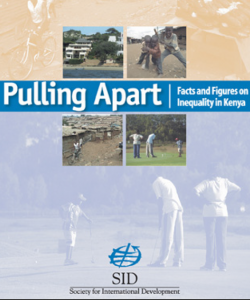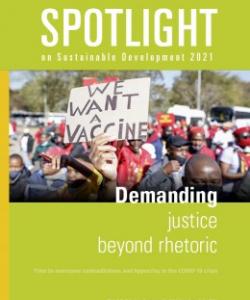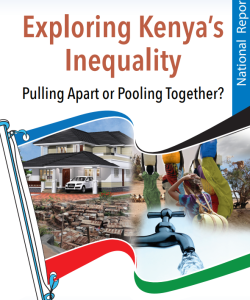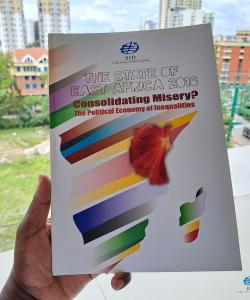
Pulling Apart: Facts and Figures on Inequality in Kenya
Inequalities in Kenya are manifested in different forms. Differences in share of income and social services are observed across regions, genders and even specific segments of the population. For instance, this publication has showed that, in 2004, the country’s top 10% households control 42% of total income while the bottom 10% control less than 1% and that the difference in life expectancy between the Central and Nyanza provinces is a staggering 16 years.
Inequality and poverty are not just a result of the lack of economic growth. This is because while economic growth is necessary for poverty reduction it is not sufficient for uplifting the poor. Increased equality can create faster growth but without an equitable distribution of benefits from growth, its effects on poverty reduction will be marginal. In addition, inequality is also a matter of human rights, as inequalities can give rise to exclusion and the failure of people’s voice being heard. Inequality evokes strong passion and stirs controversy. Despite this, or maybe because of this, there is a deafening silence in the public debate in Kenya on the subject.
This publication aims to give rise to a debate about the nature and causes of inequality in Kenya but, more importantly, what we can all do about it, from politics and policy making confronting this problem in a more direct and bold manner, to civil society and the public in general discussing and enquirying about it.
This publication is a short version of a more extensive report titled Pulling Apart: Facts and Figures on inequality in Kenya. It is part of the Society for International Development’s contribution to a project on Rich and Poor: National Discourses on Poverty, Inequality, and Growth that is being implemented jointly with the Ministry of Planning and National Development, the Swedish Embassy in Nairobi and the SID. The publication, however, remains the responsibility of the SID.



